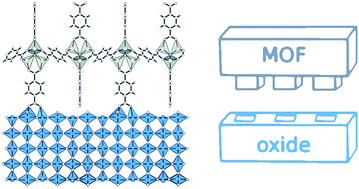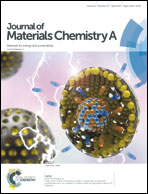Chemical bonding at the metal–organic framework/metal oxide interface: simulated epitaxial growth of MOF-5 on rutile TiO2†
Abstract
Thin-film deposition of metal–organic frameworks (MOFs) is now possible, but little is known regarding the microscopic nature of hybrid hetero-interfaces. We first assess optimal substrate combinations for coherent epitaxy of MOFs based on a lattice matching procedure. We then perform a detailed quantum mechanical/molecular mechanical investigation of the growth of (011) MOF-5 on (110) rutile TiO2. The lowest energy interface configuration involves a bidentate connection between two TiO6 polyhedra with deprotonation of terephthalic acid to a bridging oxide site. The epitaxy of MOF-5 on the surface of TiO2 was modelled with a forcefield parameterised to quantum chemical binding energies and bond lengths. The microscopic interface structure and chemical bonding characteristics are expected to be relevant to other hybrid framework-oxide combinations.

- This article is part of the themed collection: Celebrating our 2019 Prize and Award winners


 Please wait while we load your content...
Please wait while we load your content...